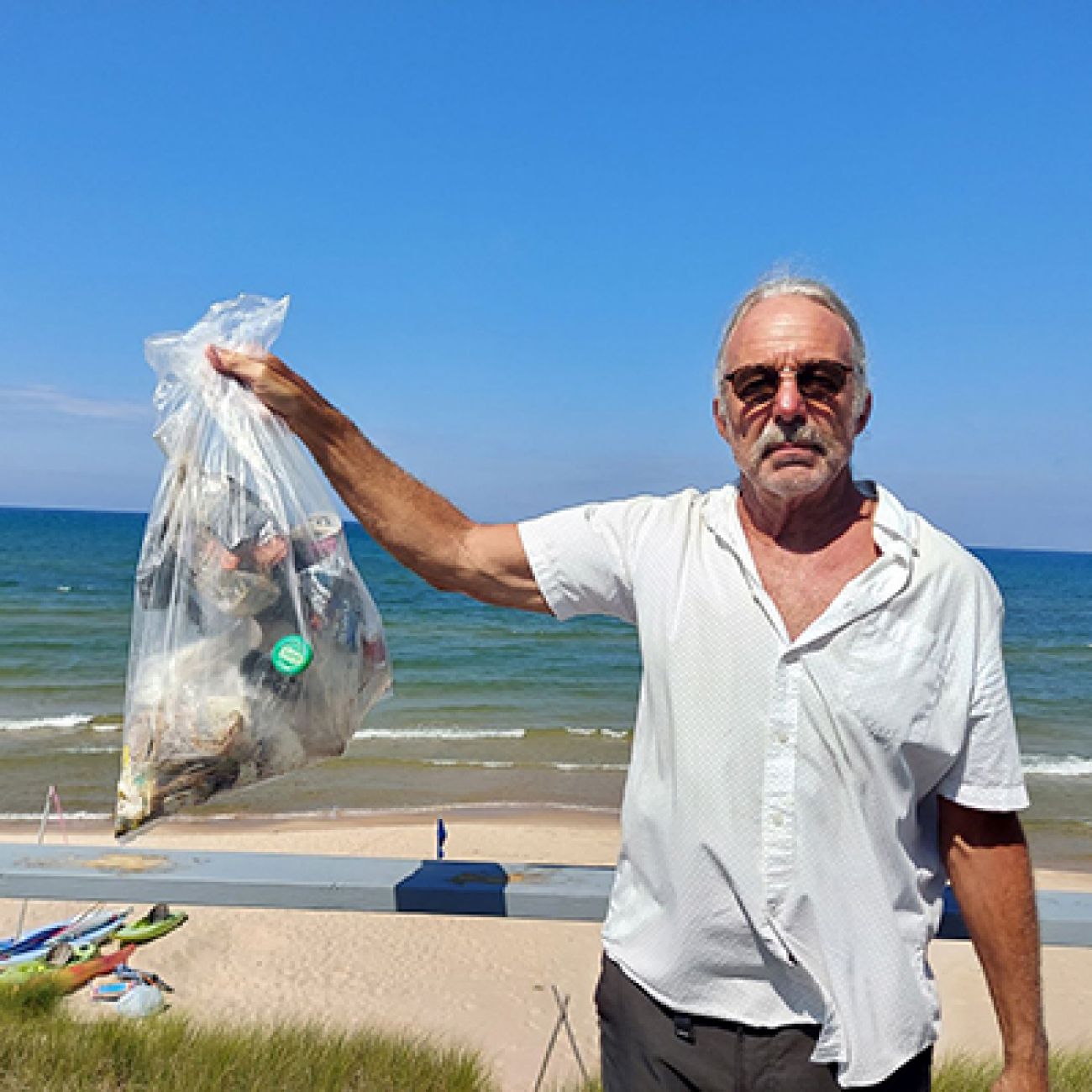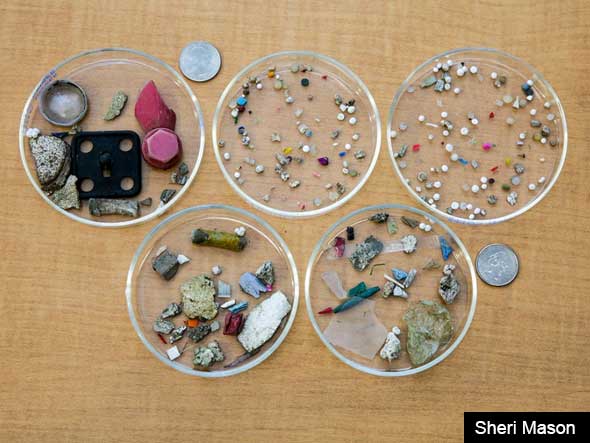(Bridge Michigan)
- Tens of millions of pounds of tiny pieces of plastic called ‘microplastics’ enter the Great Lakes each year
- Exposure is linked to learning and memory issues in animals; researchers fear similar effects on humans
- Experts say minor policy changes like banning microbeads are inadequate to combat the issue
As a lifelong West Michigan resident and avid beach walker whose hometown draws its drinking water from Lake Michigan, Arthur Hirsch has always loved spending time along the Great Lakes.
That’s how he spotted something worrying in the water three summers ago.
Thousands of plastic pellets littered the beach’s sandy shore, just a small sampling of the 22 million pounds of plastic waste that enters the Great Lakes annually, much of it in the form of tiny “microplastics” small enough to be ingested or embedded in flesh.
Hirsch had discovered nurdles, tiny plastic pellets that are melted down to create products ranging from clothing to water bottles.
“I was pissed that this unknown sourced plastic material was polluting Lake Michigan and my beach environment,” said Hirsch, an activist with the West Michigan Chapter of the Climate Reality Project.
So he started researching. Now, Hirsch spends his free time giving presentations on the growing plague of plastic pollution in the Great Lakes, a problem he said “will only get worse in the Great Lakes and worldwide.”

As the problem becomes more evident along Michigan’s shorelines, researchers are racing to understand its effects on humans and wildlife, while state policymakers take incremental steps to act on a problem rooted in global supply chain dynamics.
Plastic waste is now so ubiquitous in the environment that it has turned up in human breast milk and blood. Research commissioned by the World Wildlife Fund found that widespread contamination in drinking water and food means some people may ingest a credit card-worth of microplastics every week.
‘Concerning’ health impacts
Fernandez-Valdivia is part of a contingent of researchers in Michigan and nearby states studying how exposure to those compounds is affecting human health.
Evidence from research on animals is worrying.
Kennedy Bucci, an ecotoxicologist at the University of Toronto, found that fish larvae exposed to polyethylene, a polymer used in plastic bags and bottles, were smaller, lighter, and more likely to die.
“It was quite concerning,” Bucci said. “The eggs the females were laying had thinner egg shells, which meant the offspring were more likely to become deformed as they grew into larval fish.”
Mice that consumed microplastics showed impaired learning and memory behavior, breaking down a feature of the central nervous system known as the “blood-brain barrier” that is critical for keeping brains healthy.
“These compounds can have noxious effects on brain development and function,” Fernandez-Valdivia said.
Comparatively little is known about how microplastics affect human health. Research has shown they are capable of damaging cells, resulting in allergic reactions and cell death. Fernandez-Valdivia, whose research focuses on how environmental factors like plastic exposure can cause human cells to change, said microplastics could also affect male fertility and infant development.
“This isn’t going to be a one-generation type of problem,” he said. “It will be a multi-generational problem.”

